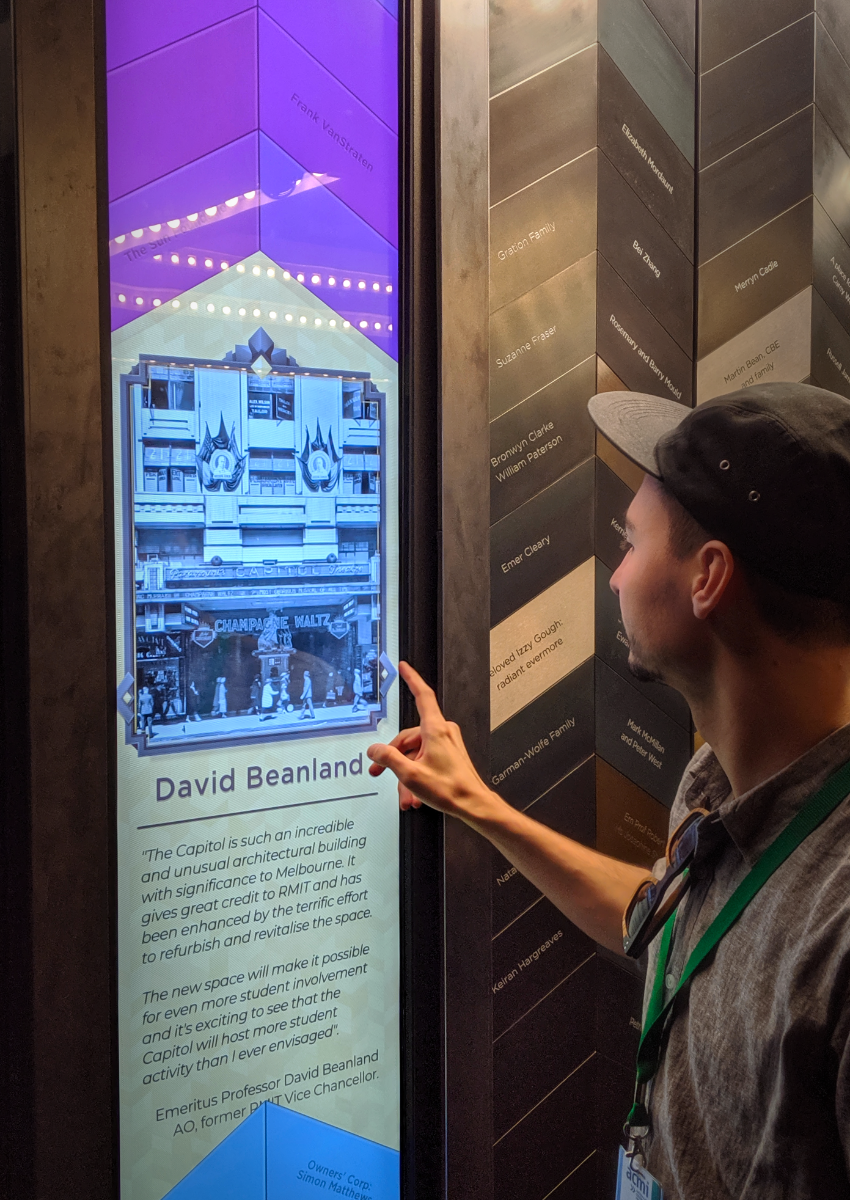An Interactive Installation for the Capitol Theater
- William Owen
- May 1, 2023
- 2 min read
or the Capitol Theater’s restoration and re-opening, I was asked to help design an interactive display for the wall honoring the donors who contributed to the project.

I was a part of the design process from the very beginning, and eventually tasked with developing an interactive display which would be used to tell the stories of the donors and the theater.




The display is a 58:9 (3840 x 600) monitor with a custom touch overlay, standing over 2m tall. So developing a workable user interface was a tricky design problem!
Each story is opened up by pressing a tile, where users can then swipe through the photos and stories to explore and
read more about the history of the theater.
These stories can be easily updated by editing an external file, using a script written by my colleague Ross Eldridge.

The display is designed to reflect different aspects of the building, primarily the donor wall itself and the theater’s famous ceiling. There are a lot of art-deco elements used throughout, including elements adapted from original drawings by the architects.
My favorite element is the shader I wrote for the tiles. I wanted to evoke the stained glass elements and the dramatic, shifting lighting of the theaters ceiling. In order to replicate the effect of an old marquee display, I limited the frame rate of the shifting colours, which gives the tiles the feeling of being lit by actual bulbs.
If you’re in Melbourne make sure to try and have a look at the theater! It’s not always open to the public but there are often events and screenings held by ACMI. The building is also usually open for tours as part of the yearly Open House Melbourne event.


